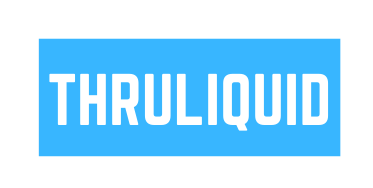Understanding Core Web Vitals
In the ever-evolving realm of Search Engine Optimization (SEO), staying ahead of the curve is crucial to achieve a competitive edge. In line with this, Google introduced the concept of Core Web Vitals in 2020, which has revolutionized how we optimize for user experience.
What are Core Web Vitals?
Core Web Vitals are a set of three specific factors that Google considers essential in a webpage’s overall user experience. These are Largest Contentful Paint (LCP), First Input Delay (FID), and Cumulative Layout Shift (CLS). LCP measures loading performance, FID gauges interactivity, while CLS is concerned with visual stability.
Largest Contentful Paint (LCP):
LCP quantifies how long it takes for a page’s main content to load. An ideal LCP measurement is 2.5 seconds or faster. Slow LCP often indicates that users need to wait too long to consume the content, leading to higher bounce rates.
First Input Delay (FID):
FID measures the time from when a user first interacts with a page (clicking a link, tapping on a button, etc.) to the time when the browser begins processing that interaction. A good FID is less than 100 milliseconds, ensuring users that their actions on the page are promptly responded to.
Cumulative Layout Shift (CLS):
CLS measures the amount of unexpected layout shifts of visual content on a page. A low CLS (less than 0.1) ensures that the page is visually stable, reducing the chances of users clicking wrong buttons due to unexpected layout changes.
Core Web Vitals & SEO
So, how do Core Web Vitals influence your SEO strategy? Google has officially included these vitals as part of the Page Experience signal in its ranking algorithm. Consequently, websites failing to meet the standards may see a drop in their search rankings, while those that comply may reap the benefits of higher visibility and increased organic traffic.
Benefits of Core Web Vitals
Enhanced User Experience:
Core Web Vitals serve as quantifiable metrics representing the user’s first-hand experience on a webpage. A fast loading page (LCP), interactive UI (FID), and a stable layout (CLS) all contribute to a smooth, frustration-free user experience. This pleasant experience can significantly reduce bounce rates and increase the time users spend on your website.
Improved Organic Ranking:
Google uses Core Web Vitals as one of the ranking factors, which means better scores may boost your website’s visibility in SERPs (Search Engine Results Pages). Given the competition in digital spaces, improving these metrics could be the determining factor in outperforming competitors in organic search.
Higher Conversion Rates:
A positive user experience often translates into higher conversion rates. If users can quickly interact with your page and the layout remains stable, they are more likely to complete the desired actions, like making a purchase, signing up for a newsletter, or filling out a form.
Better Mobile Experience:
Since Core Web Vitals measure the quality of user experience on real-world devices, they play a crucial role in mobile optimization. With mobile searches dominating the web, adhering to these vitals is key to delivering a seamless mobile user experience.
Why Do We Need Core Web Vitals?
Shifting SEO Landscape:
The introduction of Core Web Vitals signifies a paradigm shift in SEO, where user experience metrics are given as much importance as content relevance. Including these vitals in your SEO strategy ensures that you stay on top of these changes, optimizing your site for both search engines and users.
Increasing User Expectations:
Today’s users expect websites to be fast, intuitive, and stable. Core Web Vitals serve as guides to meet these expectations, helping businesses to retain users and reduce bounce rates.
Transparent Performance Metrics:
Core Web Vitals are publicly accessible metrics. This transparency allows you to regularly monitor your website’s performance, address any shortcomings, and track the impact of your improvements over time.
Gaining a Competitive Advantage:
As more businesses become aware of these performance metrics, those who prioritize them in their SEO strategy will gain a distinct advantage. Optimizing Core Web Vitals can put you ahead of competitors who are still focusing solely on traditional SEO factors.
Tips for Improving Core Web Vitals
Here are some practical ways you can optimize your Core Web Vitals.
Optimize Your Website’s Loading Speed:
For a better LCP score, consider optimizing your server response times, working on your client-side rendering, and managing your resource load times. Implement lazy loading and eliminate any unnecessarily large elements that could slow down the loading time.
Prioritize Interactivity:
To improve FID, minimize your JavaScript execution time, break up long tasks into smaller, asynchronous ones, and optimize your page for interaction readiness. Remember, a delay in interaction can frustrate users, leading to a poor user experience.
Stabilize Your Page’s Layout:
To ensure a low CLS score, always include size attributes on your images and video elements, or reserve the required space with CSS aspect ratio boxes. This can prevent unexpected layout shifts. Additionally, avoid adding content above the fold once the user starts interacting with the page.
In conclusion, Core Web Vitals are a critical component of modern SEO strategies. They put users at the heart of SEO, ensuring the web is a more enjoyable, accessible place for everyone. By optimizing your website’s Core Web Vitals, you are not only improving your search rankings but also delivering a superior user experience, driving better engagement, and potentially boosting conversions. Stay ahead of the curve by making these vitals a core part of your SEO strategy today!

